Recent Articles
Popular Makes
Body Types
2017 Hyundai Accent Road Test and Review
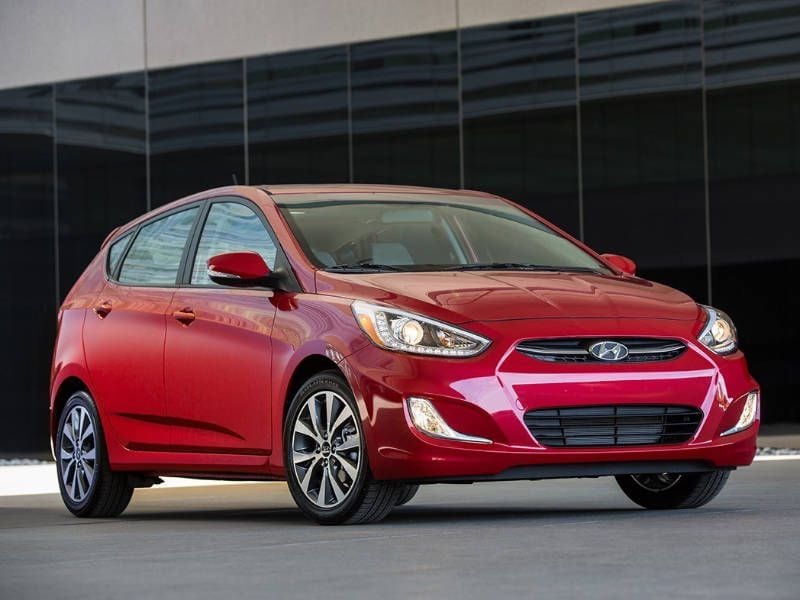
2017 Hyundai Accent ・ Photo by Hyundai
Sub-compact cars were once penalty boxes: A segment filled with homely cars you had to buy but didn’t want to own. But consumers demanded better products, and today’s sub-compact sedans and hatchbacks, cars like the new 2017 Hyundai Accent, are the very best small cars ever produced.
Automakers are now packing these little cars with content, value, and technology. Now in its fourth-generation, the comfortable, reliable, stylish and fuel efficient Hyundai Accent is a perfect example of this progress.
As these cars gain popularity, the segment has gotten quite crowded. There’s plenty of product to choose from. The 2017 Hyundai Accent successfully competes with cars from all over the world, including the Ford Fiesta, Honda Fit, Chevy Spark and Sonic, Toyota Yaris, Nissan Versa and its mechanical twin the Kia Rio.
Let's take a closer look at the 2017 Hyundai Accent.
Models and Pricing
Hyundai offers the 2017 Accent in two body styles: A four-door sedan and a five-door hatchback. There are three trim levels available. The base model is the SE Sedan with a 6-speed manual transmission. Prices start at $15,580, including an $835 destination fee, but a 6-speed automatic transmission is available for an additional $1,000. Standard features include power windows, power locks and a tilt steering wheel. The SE hatchback costs just $200 more.
A new trim level for 2017 is the Value Edition available on the Accent Sedan only. The price jumps to $17,285, but the additional equipment is worth it. The automatic transmission is standard and this model gets rear disc brakes. Also part of the package are steering wheel audio controls, cruise control, Bluetooth, an adjustable armrest and 16-inch alloy wheels, which replace the SE’s 14-inch steel rims.
The most desirable Accent is the Sport Hatchback like our test vehicle. It gets the most standard equipment including a sport-tuned suspension, a leather-wrapped steering wheel, some interior upgrades and a rear spoiler. This model costs $18,330.

Photo by Hyundai
Smooth Power
All Accents are powered by a smooth 1.6-liter four-cylinder engine with start-of-the-art technology like double overhead cams, variable valve timing and direct fuel injection. The engine makes 137 hp, which is good for the class, but some of the Hyundai’s competition offer more power.
Enthusiast drivers looking for more pint-sized power should check out the turbocharged 197-hp Ford Fiesta ST. The turbocharged version of the Chevy Sonic also delivers a sportier driving experience.
The Accent’s 6-speed manual transmission is smooth shifting and the clutch action is light. The more popular 6-speed automatic, which is standard on the Value Edition and the Sport model, also delivers excellent performance. It’s geared well and it maximizes the power of the vehicles small engine.
Front wheel drive is standard. Hyundai doesn’t offer all-wheel drive on the Accent, which is normal for this call. There isn’t a hybrid or electric version either. Buyers looking for electrification should shop the Toyota Prius C hybrid.
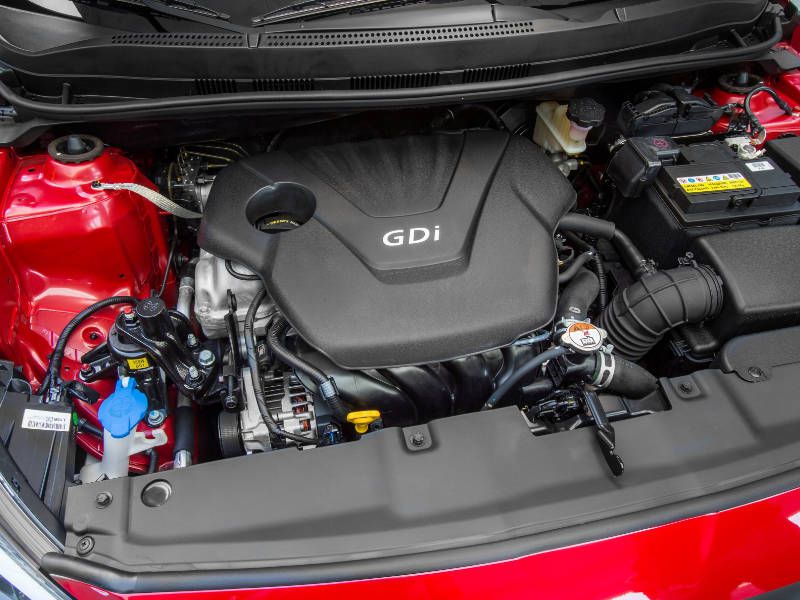
Photo by Hyundai
Strong Fuel Economy
Hyundai’s smallest and least-expensive model is also one of the brand’s most fuel-efficient. To help maximize fuel mileage all Accents are equipped with low-rolling-resistance tires and models with an automatic transmission are equipped with an Active Eco System activated with a button on the dashboard. Hyundai says the system modifies the engine and transmission to improve your miles per gallon at the expense of performance. To keep costs down the four-cylinder engine runs on less expensive regular grade gasoline.
The Accent SE with the standard 5-speed manual transmission is rated 27 mpg city and 37 mpg highway. With the 6-speed automatic, like in our Sport test vehicle, its rated 26 mpg city, and 36 mpg highway. With very minimal use of the Active Eco System, I recorded 30 mpg in mixed driving.
Although those numbers are strong for the sub-compact class, some of the Hyundai’s competition, like the Chevy Sonic, have achieved slightly better ratings. It’s also interesting that Hyundai’s larger turbocharged Elantra Eco model is rated higher at 32 mpg city and 40 mpg highway. It’s also more expensive starting at just over $21,000.
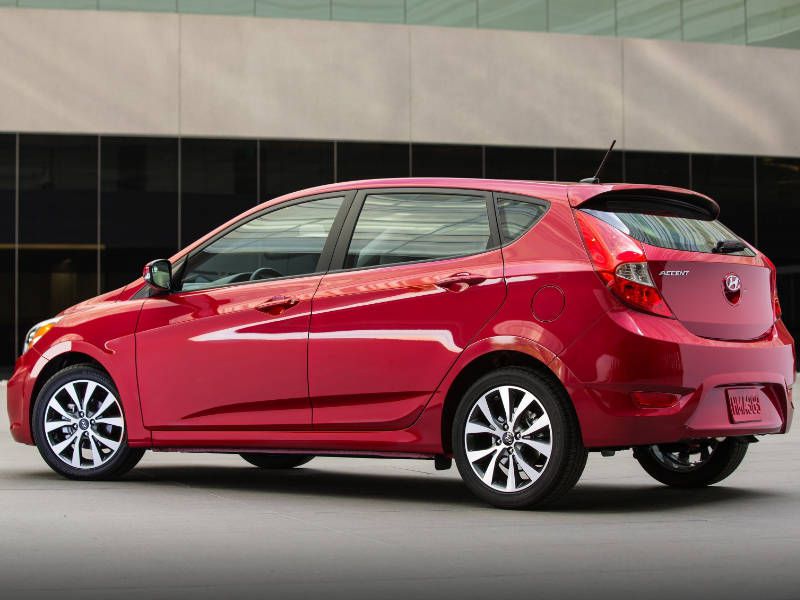
Photo by Hyundai
High Curb Appeal
There’s an upscale style to the 2017 Accent. Hyundai’s used to be boxy and bland with a down market vibe and very little curb appeal. Today the brand is a design leader, making some the most attractive cars on the road. Its lineup now includes large suvs and luxury sedans, and the entry-level Accent shares the brands “bold, fluid design” with those much more expensive models.
Sculpted and curvaceous, the Accent sedan is attractive from every angle. It’s properly proportioned and it looks luxurious, which isn’t easy for cars of this size or price point.
Still, it’s the hatchback that wins the beauty contest. Its sculpted sides, clean lines, and organically shaped taillights, which appear to float upon its backside, give it a sporty quality without coming off as a juvenile. The rear view is simple and minimalistic and Hyundai’s badging scheme is not overly ornate. Our silver Sport Hatchback test vehicle looked quite fetching riding on its 10-spoke 16-inch alloy wheels.
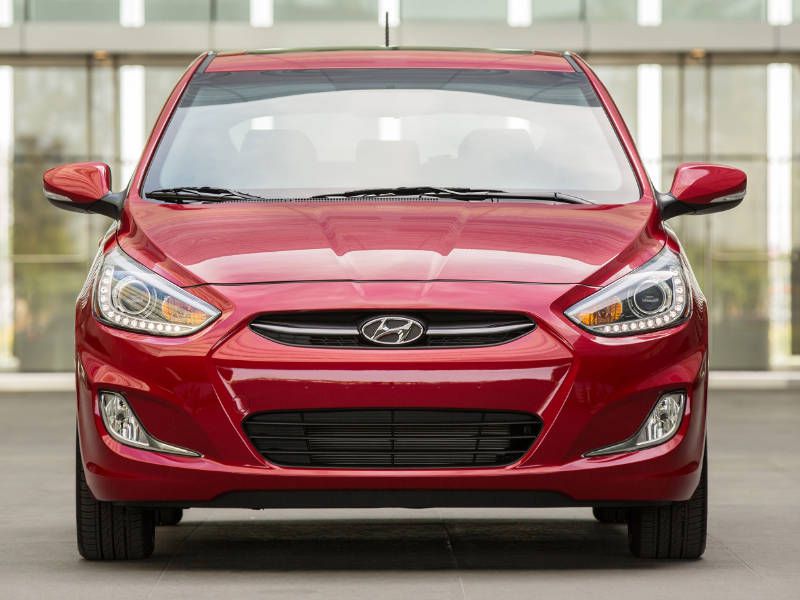
Photo by Hyundai
Modern Interior
Much like its exterior, the interior of the 2017 Hyundai Accent is anything but bland and boring. The Accents dashboard is modern with sweeping shapes and a futuristic looking center stack. And all the controls, like the three knobs that control the heat and air-conditioning, are simple and well sized.
Visibility is outstanding, and the seats in our test vehicle were extremely comfortable. A height adjustable driver’s seat and a tilt steering wheel are standard on every model so getting comfortable is not a problem. The telescopic steering wheel in our Sport Hatchback made finding that perfect driving position that much easier.
Build quality is high. All the knobs and buttons function with precision and our test vehicle’s thick, leather-wrapped steering wheel felt like it was pilfered from a sports car. I also enjoyed the silver trim, which mimics aluminum, and the chrome door handles, both of which are standard on the Sport.

Photo by Hyundai
Warm -- Not Hot -- Hatch
With 0-60 mph acceleration in about 8.5-seconds, this is not a sports sedan or a hot hatch, but the Hyundai Accent has plenty of power. You can even call it quick. And the sport tuned suspension on the Sport Hatchback model provides enough agility to satisfy most drivers. Those looking for a sporty driving experience might cross shop the Ford Fiesta and Honda Fit.
Around town, the Accent is comfortable and effortless with a smooth ride, responsive steering, and quiet interior. It also cruises well on the highway. Hyundai has managed to give the little Accent a substantial feel. It doesn’t feel like it can be blown over by a stiff wind like some small cars.
Parking is a snap thanks to the model’s small footprint.
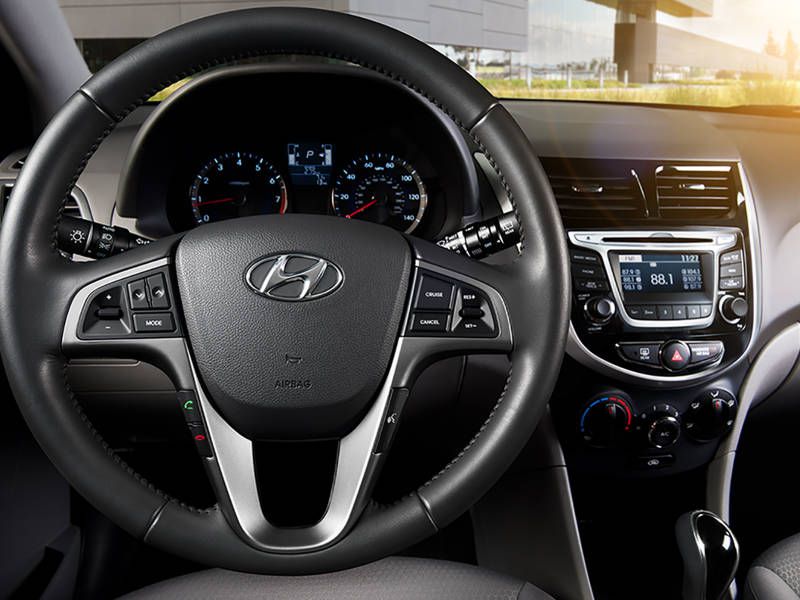
Photo by Hyundai
Abundant Cargo Space
This is not a big car, but interior storage inside the Accent is surprisingly generous. The center console bin and door pockets are just large enough to be useful, and the door pockets include bottle holders for your Vitamin Water. The two front seat cupholders are large and well-placed and there’s a well-sized cubby with a USB jack below the climate controls. It’s a perfect for your phone.
Cargo space is also surprisingly abundant. The sedan’s trunk offers 13.7 cubic feet, which is large for the class and more than enough for a couple of golf bags. Behind its rear seats, the hatchback offers 21.1 cubic feet, that’s quite a bit more than you get in Honda Fit.
If more is needed, every Accent comes with a 60/40-split fold-down rear seat. Drop the rear seats, which is an easy operation, and the hatchback's cargo volume explodes to 47.5 cubic feet. With the front wheel removed, I was able to get a mountain bike inside without much canoodling.
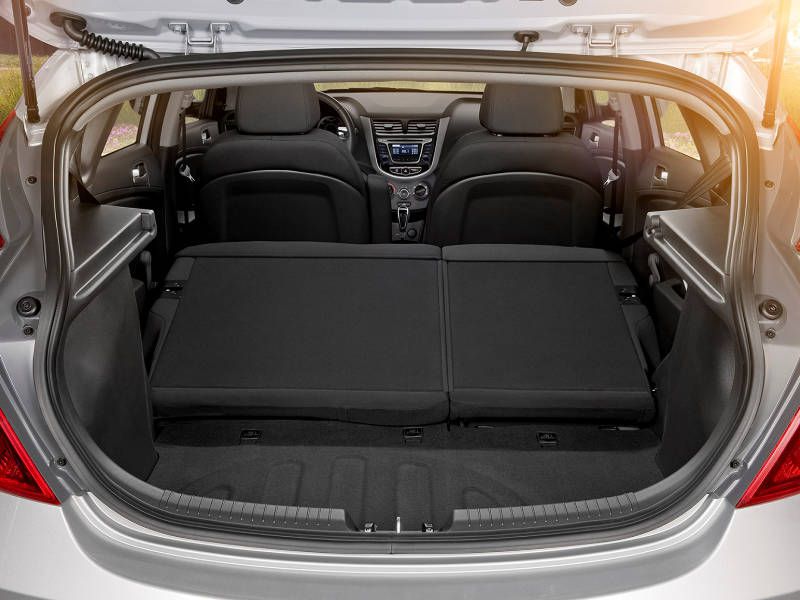
Photo by Hyundai
Family Friendly?
Hyundai’s Accent does seat five, and its rear seat is equipped with adjustable headrests for each passenger. Three pre-teens will fit just fine for the drive to volleyball practice, but this is still a sub-compact car, so sitting in the middle of the backseat for an extended period of time could get cramped.
Parents with younger kids will appreciate the Accents easy to reach LATCH connectors in the outboard seats and easily accessed upper tether anchors. But you should check first to make sure your child seat fits without any interference from the front seatbacks.
In crash testing, the 2017 Ford Focus is rating 4-stars from the National Highway Traffic Safety Administration. Many cars in this class, like the Chevy Sonic and Honda Fit, are rated 5-stars.
Hyundai’s warranty is one of the longest in the business. It covers much of the vehicle for 5 years or 60,000 miles and it covers the vehicle’s powertrain components for 10 years or 100,000 miles.
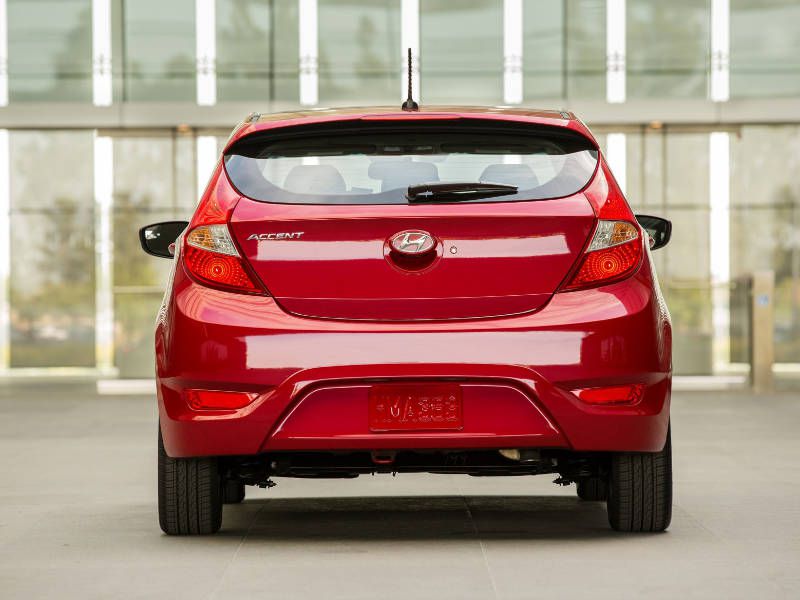
Photo by Hyundai
Final Thoughts
Although the SE is enough for most buyers, if you can, step up to the better equipped Value Edition or the Sport Hatchback. You’ll appreciate the additional features and performance as the months of ownership click by. And the additional cargo volume and style of the hatchback for just $200 more is an undeniable bargain.
Overall the 2017 Hyundai Accent delivers high levels of style, comfort, and family-friendly functionality. It’s a solid choice in the very competitive sub-compact class.
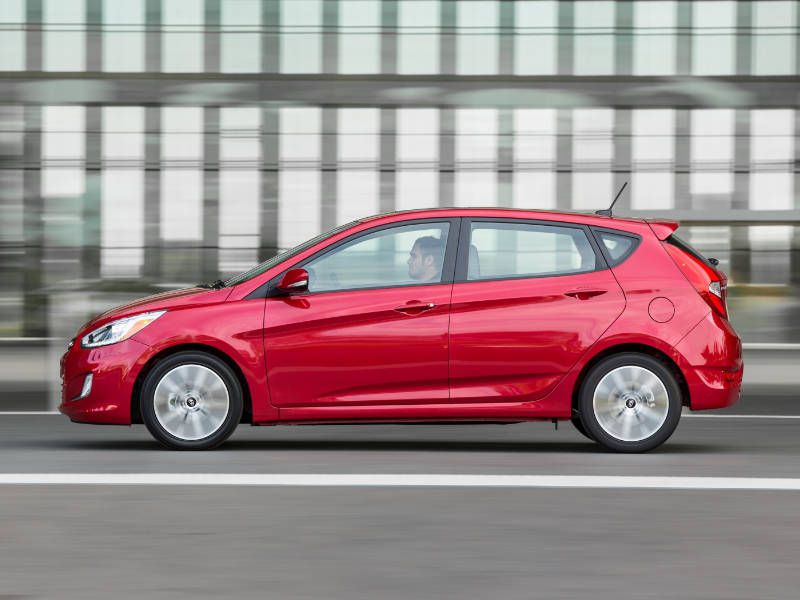
Photo by Hyundai